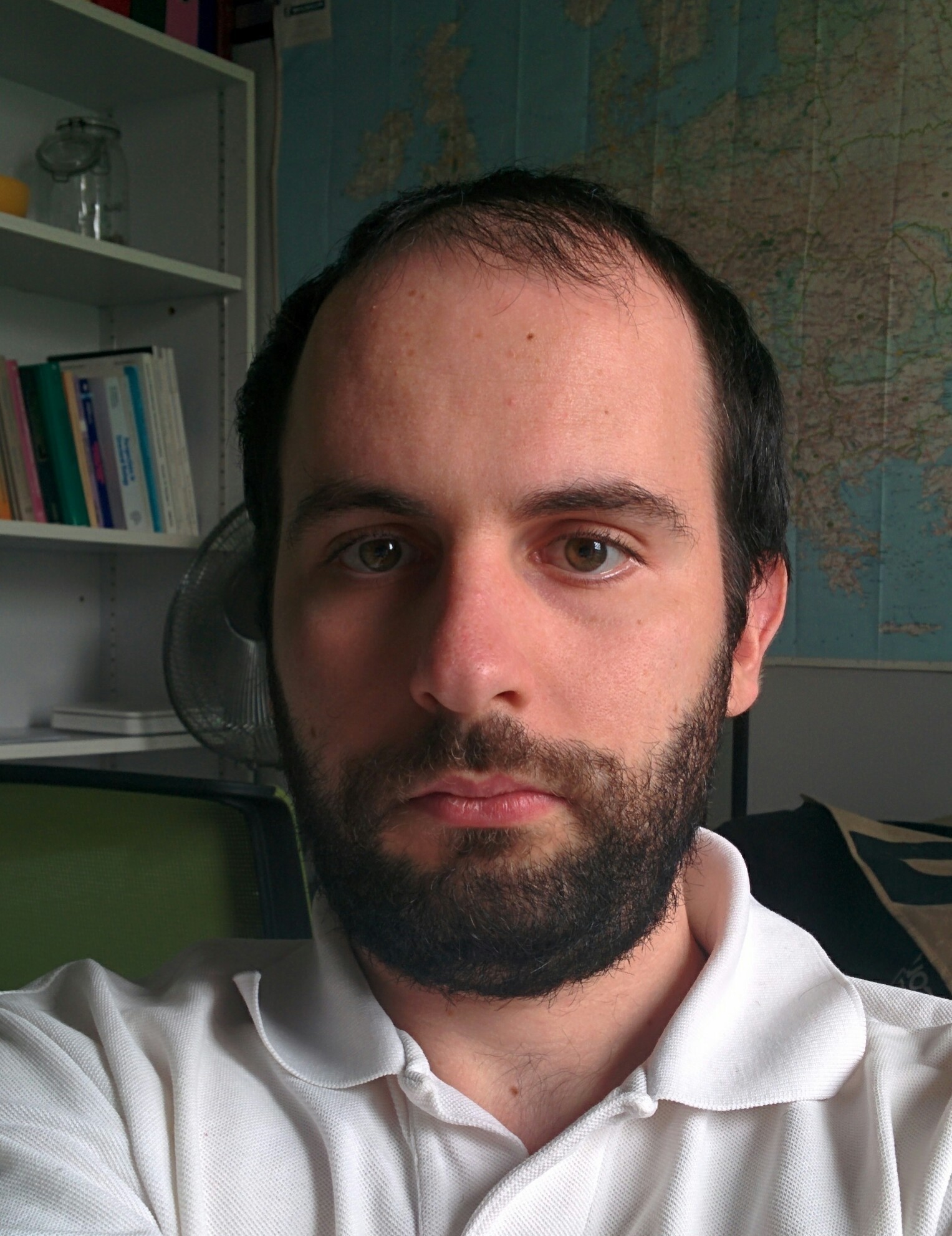Structural Biochemistry, Institut de Biologie Moléculaire et Cellulaire, Strasbourg 'Z-DNA like' fragments in RNA: a recurring structural motif with implications for folding, RNA/protein recognition and immune response. Nucleic Acids Res. 2016 May 5. pii: gkw388
D'Ascenzo L, Leonarski F, Vicens Q, Auffinger P.
Cv
Etudiant italien de 28 ans, j’ai obtenu ma licence de chimie à l’Université de Tor Vergata (Rome, Italie) puis un master de chimie et biologie à l’Université de Strasbourg. Intéressé par la biologie structurale, j’ai rejoint le groupe du Prof. Eric Westhof à l’Institut de Biologie Moléculaire et Cellulaire (IBMC-Strasbourg). L’objectif de ma thèse supervisé par le Dr. Pascal Auffinger est la caractérisation de réseaux d’interactions non-covalentes au sein de systèmes ARN/ARN et ARN/protéines à l’échelle atomique et impliquant des interactions faibles de type "anion-π" ou "lone pair-π". Ces interactions structurent des tétraboucles d’ARN comme GNRA et UNCG, ces dernières avec un step CpG identique à ceux dans l’ADN-Z, avec conséquences pour le folding, la reconnaissance ARN/protéines et la réponse immunitaire. Pour ce faire, j’ai utilisé des techniques d’analyse de bases de données structurales (PDB, CSD) et des techniques de mécanique quantique et de dynamique moléculaire.
Contact
Structural Biochemistry
UPR 9002 CNRS
Institut de Biologie Moléculaire et Cellulaire
15 rue René Descartes
67084 Strasbourg Cedex
This email address is being protected from spambots. You need JavaScript enabled to view it.
Résumé de l'article
Since the work of Alexander Rich, who solved the first Z-DNA crystal structure, we have known that d(CpG) steps can adopt a particular structure that leads to forming left-handed helices. However, it is still largely unrecognized that other sequences can adopt ‘left-handed’ conformations in DNA and RNA, in double as well as single stranded contexts. These ‘Z-like’ steps involve the coexistence of several rare structural features: a C2’-endo puckering, a syn nucleotide and a lone pair–π stacking between a ribose O4’ atom and a nucleobase. This particular arrangement induces a conformational stress in the RNA backbone, which limits the occurrence of Z-like steps to ≈0.1% of all dinucleotide steps in the PDB. Here, we report over 600 instances of Z-like steps, which are located within r(UNCG) tetraloops but also in small and large RNAs including riboswitches, ribozymes and ribosomes. Given their complexity, Z-like steps are probably associated with slow folding kinetics and once formed could lock a fold through the formation of unique long-range contacts. Proteins involved in immunologic response also specifically recognize/induce these peculiar folds. Thus, characterizing the conformational features of these motifs could be a key to understanding the immune response at a structural level.




